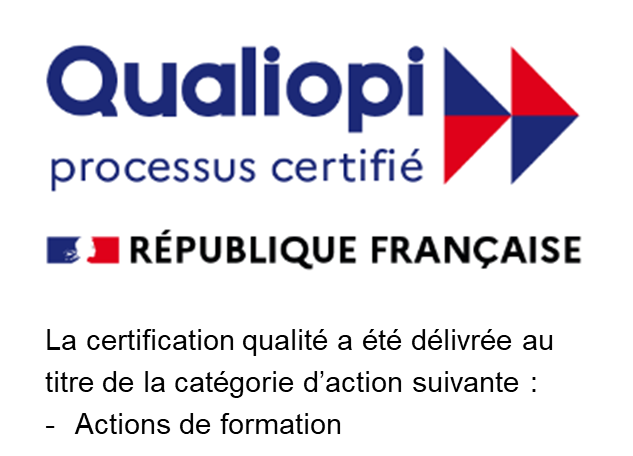Navigating APAC Business Trends: The Importance of Intercultural Agility

A series of trends and events are impacting the way APAC-based companies are doing business, as well as how international organizations engage with them. As workforce borders within this active region continue to blur, intercultural agility has become more important – and more nuanced – than ever before. Whether it’s a business that's building a diverse workforce within the APAC region or a multi-national company working across cultures to do business with them, employers and the employees that work for them must forget everything they think they know about intercultural communication. Growing workforce diversity means not just knowing about the culture a business is headquartered in, but also the many cultures making up their staff. Intercultural training has therefore become a crucial investment for any business hoping to thrive in this diverse landscape.
How is the APAC region evolving?
There are a number of regional-specific factors influencing business changes within the APAC region. Below, we cover just a few.
Urbanization

Rapid urbanization continues throughout the APAC region, with cities expanding and new urban centers emerging, particularly in Southeast Asia and India.
Regional Cooperation

Calls for greater regional cooperation have been evidenced through organizations like ASEAN and initiatives like the Regional Comprehensive Economic Partnership (RCEP):
- ASEAN is a political and economic union of 10 countries in Southeast Asia that aims to promote cooperation, peace, and stability among its ten members: Brunei, Cambodia, Indonesia, Laos, Malaysia, Myanmar, the Philippines, Singapore, Thailand, and Vietnam. ASEAN’s objectives include accelerating economic growth, social progress, and cultural development and forming a unified trade block and single market to enhance economic development. Their population of approximately 680 million surpasses the population of the European Union.
- RCEP is a free trade agreement among the APAC countries of Australia, Brunei, Cambodia, China, Indonesia, Japan, South Korea, Laos, Malaysia, Myanmar, New Zealand, the Philippines, Singapore, Thailand, and Vietnam. Their mission is to eliminate approximately 90% of the tariffs on imports between its signatories within 20 years of coming into force, and establish common rules for e-commerce, trade, and intellectual property.
Generational Factors

In most of the world, Gen Z is reshaping consumer behavior, cultural dynamics, and social movements through their tech-savvy, socially conscious, and innovative behaviors. APAC is no exception. There is also a growing emphasis on preserving cultural heritage amid rapid modernization and globalization.
Economic Changes

- Economic Growth. APAC is projected to contribute significantly to global growth in the coming years, with Southeast Asia and India emerging as key economic powerhouses.
- Supply Chain Diversification. Companies within APAC are diversifying their supply chains to reduce dependence on any single country, driven by geopolitical uncertainties and the need for resilience.
Business Factors

- AI and Technology. AI and digital transformation are front-of-mind in APAC-based company business plans, with organizations investing heavily in technology to stay competitive.
- Sustainability. There is a strong focus on sustainability in APAC, with businesses adopting green practices and governments implementing stricter environmental regulations.
Each of these trends relies heavily on inter-country collaboration and company workforce diversification, further leading to the importance of intercultural training to avoid miscommunications and missteps.
Who needs to prioritize intercultural training – APAC-based companies or the multinational companies that do business with them?
In a word, both. Here’s why:
Differences in Cultural Communication Styles
-
APAC-Based CompaniesList Item 1
There are significant cultural differences among countries located in the APAC region, from religious beliefs and business etiquette to social norms and communication styles. Because there has been a growing number of APAC-based companies that are 1) working across cultures within the region and 2) diversifying their workforces, these organizations will find it crucial to understand the differences associated with every culture their employees and customers identify with. Failure to do so can have costly effects on workforce engagement and collaboration and, therefore, productivity, innovation, customer service and future business.
-
Multinational Companies (MNCs).
MNCs that hire employees, service clients, or obtain services from an APAC-based business are quickly learning that the intercultural knowledge they once had about the region needs to evolve. Put simply: if a business headquartered in China now employs workers from Malaysia and Vietnam, the MNCs that work with them will need to expand their intercultural knowledge to include those cultures if they hope to remain successful. Here, too, a failure to address intercultural differences can result in negative impacts to working relationships and the business’ bottom line.
The increasing demand for intercultural training in APAC
Intercultural training in APAC is evolving to address geo-specific evolution and resulting business needs related to the region. Now in especially high demand, this training is also convenient and easily accessible thanks to technological advancements that bring the expertise of skilled experts directly to workplaces and workforces – at a variety of schedules and budgets.
Below, we’ll discuss just a few of the trends we’re seeing in the APAC region that directly impact how intercultural training is designed and prioritized:
1) Impacts of ASEAN Integration and RCEP Implementation.
As these initiatives continue to evolve, there has been a growing emphasis on training that promotes intercultural understanding across member countries, which have diverse cultural, business, and communication practices. This includes training on shared values and economic collaboration, as well as overcoming historical tensions between certain countries in the region. Programs often focus on enhancing cross-border collaboration in business, diplomacy, and trade, with language, business etiquette and communication style differences being key components.
2) Emphasis on Chinese Business Culture.
Given China's dominance in the APAC region, intercultural training increasingly emphasizes an understanding of Chinese business practices and cultural nuances. This includes building knowledge on the importance of hierarchy, guanxi (personal relationships), face-saving, and collectivism in the business world. Again, for companies based in China with workforces throughout APAC, intercultural training also includes building skills for cross-cultural collaborations with additional cultures located within the region.
3) India’s Role in Global Business.
Thanks to its growing economic power and complex cultural diversity, India has become a strong focus of intercultural training in the APAC region. In addition to understanding regional differences within the country, the importance of family, social hierarchies, and negotiation styles are key areas of focus – as is the importance of bridging the gap between India’s traditional business culture and its rapidly modernizing economy.
4) Increased Demand for Cross-Cultural Skills in Japan.
Japan remains a major economic player and intercultural training is crucial for navigating its unique corporate culture. This includes, but isn’t limited to, respect for hierarchy, decision-making processes, indirect communication, and group harmony. Additionally, as Japan continues to attract international workers and foreign investment, companies and organizations are investing more in training to better manage diverse, intercultural teams.
5) Growing Interest in South Korea and its Global Interactions.
South Korea's expanding influence, particularly in the fields of technology, entertainment, and diplomacy, has led to an increasing need for intercultural training that addresses Korean business etiquette, hierarchical relationships, and direct communication style. Additionally, with the rise of Korean pop culture (K-Pop, Korean cinema, etc.), there is also a focus on cultural training that fosters understanding of Korean soft power (a nation’s attempt to influence its brand perception through attraction and persuasion).
6) Cross-Cultural Competence for Global Businesses.
MNCs operating in Asia are increasingly seeking training programs that address regional and cross-cultural communication. Understanding both the economic and cultural nuances of the region is critical for fostering effective collaborations across countries like Indonesia, Vietnam, Malaysia, and Thailand. Cultural agility regarding multiple APAC cultures is necessary, due to increased workforce diversity in many regionally based companies. A holistic approach has become more popular, integrating cultural intelligence (CQ) into leadership development, as well as offering workshops on managing multicultural teams.
7) The Role of Technology and Virtual Learning.
With the rise of digital transformation, virtual intercultural training is becoming more common across the APAC region. Online platforms allow for broader accessibility and flexibility in reaching participants in remote areas and across cultures – but remember to use that technology to connect with intercultural experts, rather than rely solely on pre-recorded learning programs. Recent research shows that self-paced learning is no match for real-time guidance from skilled experts, who can react to participant wins or struggles in real time, match teaching style to unique participant needs, and assess whether learning has truly occurred.
8) Training Focused on Global Inclusion.
As APAC countries embrace diversity in their workplaces, there is a growing emphasis on training that promotes inclusivity and cross-cultural sensitivity. This includes programs focused on gender, women as leaders, and ethnic and generational diversity. Countries like Singapore and Japan, where expatriate populations are significant, are particularly focused on intercultural competence to ensure collaborative and cohesive working environments.
9) Handling Geopolitical Sensitivities.
With the growing tensions in regions such as the South China Sea and North Korea, intercultural training is also addressing how to navigate sensitive political and historical issues in business contexts. There is a need for managers and employees to be aware of potential diplomatic tensions and how to handle them with cultural sensitivity.
10) Cultural Intelligence as a Leadership Skill.
Leading with cultural intelligence is a critical capability for effective leadership in our multicultural world – decoding how people think, lead, and get things done across cultures. Therefore, more businesses and academic institutions across APAC are focusing on developing leaders with high cultural intelligence and agility. This includes leadership development programs designed to equip executives with the skills to manage diverse teams, navigate cross-cultural negotiations, and lead in globalized markets. Companies in Asia are increasingly emphasizing the need for leaders to adapt their communication and management styles to different cultural contexts.
The Importance of Intercultural Training in APAC and Working Across Cultures
Relationship building and trust are vital to an organization’s internal and external success. Because so many companies based in APAC are diversifying their workforces across the region—and understanding cultural nuances is crucial to developing trust – companies that work across cultures must rethink the way they approach intercultural collaboration and agility. A global mindset is essential. Soft skills needed to enhance relationship building include:
Networking Expertise
A strong ability to build and maintain relationships with both key internal and external stakeholders.
Trustworthiness
Demonstrating integrity and reliability, fostering trust with partners and stakeholders.
Emotional Intelligence
Possessing a high level of empathy, self-awareness, and the ability to navigate complex interpersonal dynamics.
Negotiation and Influence Skills
Ability to create mutually beneficial agreements, rather than one-sided outcomes. Persuasive communication skills are, therefore, also important for employees to have in their toolkit when working across cultures.
Adaptability, Resilience, and Innovation
The ability to maintain composure and patience when setbacks occur, priorities change, and pivoting is necessary.
While the above skills are important in any business scenario, they are especially important when working across cultures. What is considered a respectful networking practice in one country may be offensive in another. Attempting to establish trust by making eye-contact and speaking directly to one colleague may be highly effective, but a coworker from another culture may find it to be disrespectful. Effective relationship building techniques will vary greatly, heavily influenced by the norms of two or more people who come from very different backgrounds, who have varied value systems and pre-established beliefs regarding what effective relationship building consists of. Only by mastering intercultural agility among its workforce, can an organization hope to be successful.
By fostering intercultural agility, businesses can avoid misunderstandings, develop better intercultural relationships, and ultimately achieve greater success across diverse workforces, cultures, customer bases, and business partnerships. To be sure you’re providing your employees with the most effective training possible, look for an intercultural services provider that utilizes a blend of technology, human interaction, valid and reliable assessment instruments, and engaging learning opportunities that are tailored to address your organization’s specific target markets and corporate needs. NetExpat, for example, offers a variety of intercultural training options, from peer-to-peer learning scenarios to mobile apps with real people for real-time support; our goal is to empower your team to thrive in a global market.
For more information about how NetExpat can help your organization avoid the costly impacts of intercultural miscommunications, build a culturally agile workforce and thrive in a global market, contact us
at
info@netexpat.com
Share this post

















